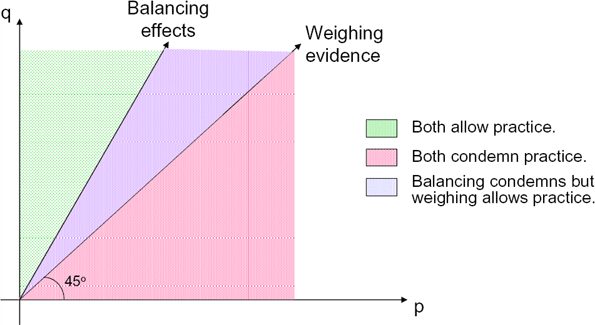| Slide 1
Market Definition, Concentration & Section 2
Michael L. Katz
University of California, Berkeley
| 7 March 2007 |
 |
Slide 2
Why delineate relevant markets in a Section 2 case?
- Ultimate question is whether a given practice harms competition and consumers.
- Where do relevant markets enter the picture?
- Concentration as an indicator of whether the defendant currently has monopoly power.
- Concentration as a screen for potential harm to competition.
- Identify rivals that would have to be harmed to harm competition.
Slide 3
Concentration as an indicator of whether defendant currently has monopoly power.
- The Hypothetical Monopolist Test breaks down.
- Market boundaries as hard-core pornography in Dentsply and Microsoft?
- It can be important to identify the source of current market shares.
- Product differentiation, exclusive access to critical assets, or aggressive pricing?
- Concentration without an underlying theory of causation may tell us little about competition.
- So what? Current market power as a one-sided test of successful monopoly maintenance.
- Low shares indicate lack of success but inverse can fail.
Slide 4
Concentration as a screen for potential harm to competition.
- Appears to equate predation and exclusion with an output restriction.
- Current share of defendant not always relevant if practice threatens to harm rivals going forward.
- Use and usefulness will depend on the practice being challenged.
- Example: with exclusive dealing, concentration might be an indicator of whether exclusive contracts are anticompetitive.
Slide 5
Identify rivals that would have to be harmed to harm competition.
- To understand a practice’s effects on competition, need to understand who the competitors are.
- Consider both existing and potential competitors.
- Relevant market indicates what the but-for world must describe.
- When innovation competition is significant, current market shares may be of little relevance.
- Extreme case: Under Schumpeterian competition market structure may be a series of temporary monopolies but dynamically competitive.
Slide 6
Meeting plaintiff’s market-definition burden can be difficult even absent innovation.
- Courts often place burden on plaintiff to establish “the” 0-1 boundary for supplier participation.
- Hard to meet burden with differentiated products.
- Can be “difficult to identify ‘clear breaks in the chain of substitutes’ sufficient to justify bright-line market boundaries” in differentiated products markets. (Judge Walker in U.S. v Oracle merger case)
- Unfortunate Irony: If competition is localized, why are we interested in determining the concentration of a broader market?
Slide 7
Innovation increases difficulty of defining relevant markets to assess static effects.
- Sets of competing products and producers may be subject to repeated, significant changes.
- Innovation can make markets broader or narrower.
- Various products (producers) might be catching up or falling behind.
- Demanding bright lines in differentiated product markets with innovation may be equivalent to abandoning enforcement.
Deciding cases on boundaries is unfortunate given agreement among economists and some courts that there no need for a formal algorithm that defines 0-1 boundaries.
Slide 8
It is important to examine whether the uncertainty matters.
 [D] [D]
Suppose supplier of product 1 destroys supplier of product 2.
Central issue: does the inclusion of product 3 in relevant market affect projected competitive harms?
Slide 9
A simple-yet-sophisticated approach to treating market boundary uncertainty.
- Ask where the dividing line matters
- Allow parties to argue about on which side of the critical line the “actual” market boundary lies without a requirement of certainty
- Assess the expected competitive harms in the light of the uncertainty the fuzzy market definition creates for the probability that those harms will infact occur.
Slide 10
Weighing the evidence yields biased decisions.
Harm = H with probability p.
Efficiencies = E with probability q.
H > E.
 [D] [D]
Slide 11
What market is relevant for innovation?
- Current sales may be uninformative about future innovation.
- Issues become those of potential competition (in product or technology markets) rather than actual competition.
- One interpretation of “innovation markets” is that they are an attempt to re-label potential as actual competition by focusing on the process of technology creation.
Although ultimate concern is with product-market effects, it can be important to understand positions interms of R&D capabilities and assets.
Slide 12
Geographic markets are markets.
- They have buyers as well as sellers.
- Need to consider the locations of both buyers and sellers when defining market boundaries.
- Identify the set of plants that can serve consumers in a given area.
|

 U.S. Department
of Justice
U.S. Department
of Justice



